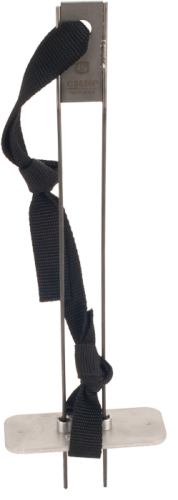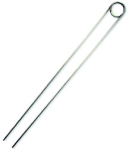






概览
CS650G导入工具有助于土壤含水量传感器更容易插入密实土或基岩土中。如果不使用CS650G,安装传感器时所用的外力有可能会损坏传感器。CS650G生成平行的导入孔后,再将传感器插入。CS650G替代了14383和14384。
图像

技术说明
产品规格
| Dimensions | 38.1 x 12.7 x 5.08 cm (15.0 x 5.0 x 2.0 in.) |
| Weight | 204.12 g (0.45 g) |
视频与教程
常见问题解答
CS650G: 3
展开全部收起全部
-
The CS650 and CS655 work best when the rods are inserted into the soil as parallel to each other as possible. To make parallel pilot holes before installation, use the CS650G Rod Insertion Guide Tool. Minor deflection of a rod during insertion, such as when it contacts a small stone or root, may not affect the readings significantly, but major deflections may cause the CS650 or CS655 to operate outside of published accuracy specifications.
-
If the soil is rocky, dry, or hard, Campbell Scientific recommends using a CS650G to make pilot holes before installing the sensor into the soil. When the soil is free of rocks, moderate to very wet, and relatively soft, then it is usually possible to install the sensor rods and keep them parallel by applying gentle and steady pressure on the sensor head.
Note: Never strike the sensor head with a hammer or step on the sensor head to force the rods into the soil.
-
If the soil is rocky, dry, or hard, Campbell Scientific recommends using a CS650G to make pilot holes before installing the sensor into the soil. When the soil is free of rocks, moderate to very wet, and relatively soft, it is usually possible to install the sensor rods and keep them parallel using gentle and steady pressure on the sensor head.
Note: Never strike the sensor head with a hammer or step on the sensor head to force the rods into the soil.

